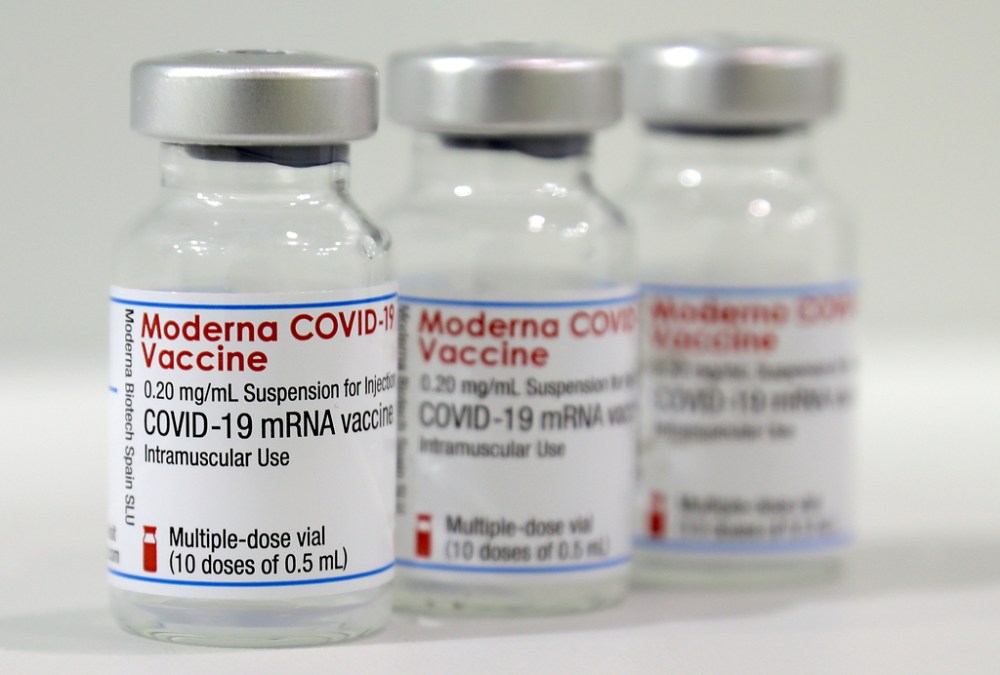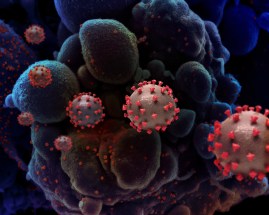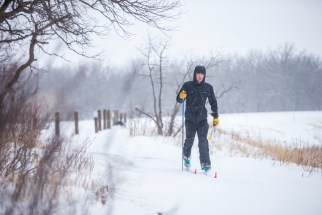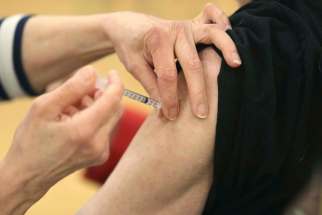Worrisome COVID variant confirmed in north Test-positivity rate in region stubbornly high, MKO health official says
Read this article for free:
or
Already have an account? Log in here »
To continue reading, please subscribe:
Monthly Digital Subscription
$0 for the first 4 weeks*
- Enjoy unlimited reading on winnipegfreepress.com
- Read the E-Edition, our digital replica newspaper
- Access News Break, our award-winning app
- Play interactive puzzles
*No charge for 4 weeks then price increases to the regular rate of $19.00 plus GST every four weeks. Offer available to new and qualified returning subscribers only. Cancel any time.
Monthly Digital Subscription
$4.75/week*
- Enjoy unlimited reading on winnipegfreepress.com
- Read the E-Edition, our digital replica newspaper
- Access News Break, our award-winning app
- Play interactive puzzles
*Billed as $19 plus GST every four weeks. Cancel any time.
To continue reading, please subscribe:
Add Free Press access to your Brandon Sun subscription for only an additional
$1 for the first 4 weeks*
*Your next subscription payment will increase by $1.00 and you will be charged $16.99 plus GST for four weeks. After four weeks, your payment will increase to $23.99 plus GST every four weeks.
Read unlimited articles for free today:
or
Already have an account? Log in here »
Hey there, time traveller!
This article was published 13/04/2021 (1701 days ago), so information in it may no longer be current.
A highly contagious COVID-19 variant has made its way to Manitoba’s north as the region races to vaccinate residents while battling a persistently high test-positivity rate.
“We’re really not anywhere near the point of effective herd immunity levels yet,” said Dr. Michael Routledge, the province’s former chief public health officer, who now is part of the health team at Manitoba Keewatinowi Okimakanak.
“We’re continuing to see, across the north, a fairly high test positivity. It has been stubbornly high, around that 15 per cent level.”

Across Manitoba, the five-day test-positivity rate was six per cent as of Tuesday morning.
Health officials generally agree that in order to know where cases are occurring and determine who needs to be isolated to contain spread, the rate should be kept below 2.5 per cent.
The World Health Organization advises jurisdictions implementing temporary restrictions to keep them in place until the positivity rate holds below five per cent for at least two weeks.
As of Tuesday, northern Manitoba had more active COVID-19 cases than Winnipeg, concentrated in communities such as Island Lake, Pukatawagan and the area surrounding Easterville because of social determinants, including cramped housing, which allows the virus to thrive by infecting numerous people in a home, sometimes over the course of weeks, Routledge said Tuesday during an MKO virtual briefing.
“What we’ve seen for quite some time is that once COVID gets started in one of (the northern) communities, often times it explodes, in fairly significant outbreaks,” he said.
That’s led to military deployments on seven Manitoba reserves since November to get dramatic spread under control.
Avoiding those outbreaks could get even more difficult. The province announced the first confirmed case of a highly contagious COVID-19 variant in the north on Tuesday. Officials are awaiting the results of genomic sequencing to determine which mutant strain of the virus is involved.
Northern chiefs are hoping checkpoints will help keep the more-infectious variants at bay. Reserves have tried to screen anyone arriving by road or snowmobile, sending visitors away and putting COVID-positive residents into isolation shelters.

“It has been in place for non-essential travel, and I think that has really helped our First Nations,” said MKO Vice-Chief Shirley Ducharme, who is the chief of O-Pipon-Na-Piwin Cree Nation.
Anyone visiting the north should be tested beforehand, and follow protocols, including people heading home after medical treatment and Winnipeg residents travelling to their home reserve to obtain a vaccine, Routledge said.
“Obviously, any travel presents some risks, but we need people to get to the vaccination sites and I have a lot of faith in the communities to manage their recommendations for their community members,” he said.
First Nations members are hospitalized at dramatically higher rates than other Manitobans with COVID-19 due to decades of inequities, which is why they’re being prioritized for vaccination. Members living off reserve are currently eligible to be vaccinated at age 40 and older.
All reserves will start immunizing anyone age 18 and older this month as part of a campaign by the First Nations pandemic team to administer 100,000 doses to Manitobans in the most remote parts of the province before July, including non-Indigenous people in far-flung communities. Forty-eight of the 63 First Nations reserves in Manitoba will have received their first large shipment of Moderna doses by the end of next week.
A persistent data lag means it’s not possible to determine how many of those doses have been administered this month; online data is missing some of the doses injected during the past two weeks.
Chiefs in southern communities have had difficulties drumming up enough interest, and some have given up doses to other Indigenous communities, although that number is amounts to “a little more than a handful,” said Melanie MacKinnon, a nurse who helps oversee the rollout as part of the First Nations team.
Originally, reserves were supposed to get enough shots to immunize 70 per cent of their populations; now, they have the option to receive 60 per cent of that quota at first, with the balance waiting in Winnipeg freezers.
“It’s a precaution to extend the life of the community’s allocation,” said MacKinnon, noting that the Moderna shots get thawed and transported to reserves, when the clock begins ticking down until doses expire three weeks later.
Some reserves have had to reschedule this week’s vaccination clinics because of the weather, but the doses had arrived in the region last week and communities needing medical teams to help get shots into arms should expect them to arrive soon, MacKinnon said.
The First Nations team is learning from its initial rollout and making plans to avoid the need to move thawed vaccines given the tighter timeline to use them, she said.
“I can say none of that vaccine has been wasted; it has all been used before its expiry date,” she said.
dylan.robertson@freepress.mb.ca
History
Updated on Wednesday, April 14, 2021 6:38 AM CDT: Corrects spelling of Dr. Michael Routledge's name








